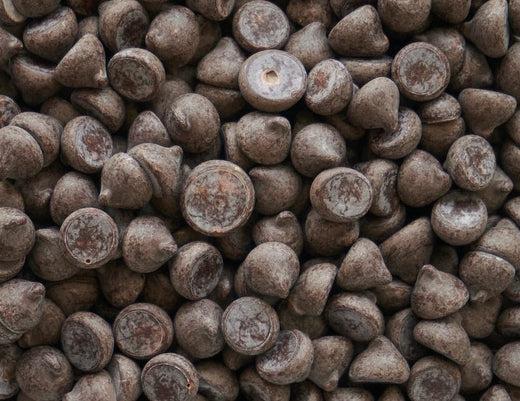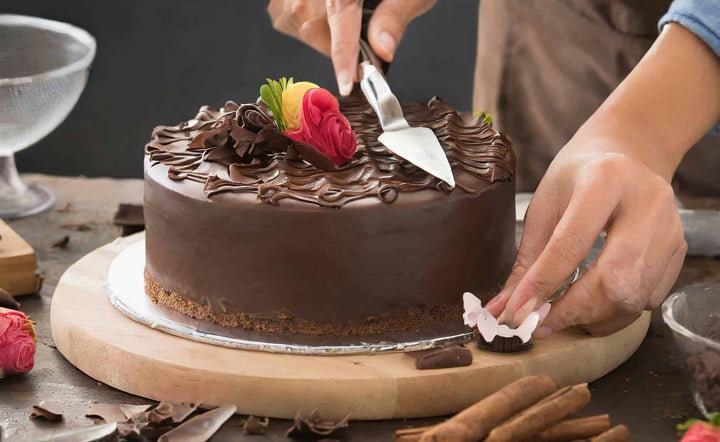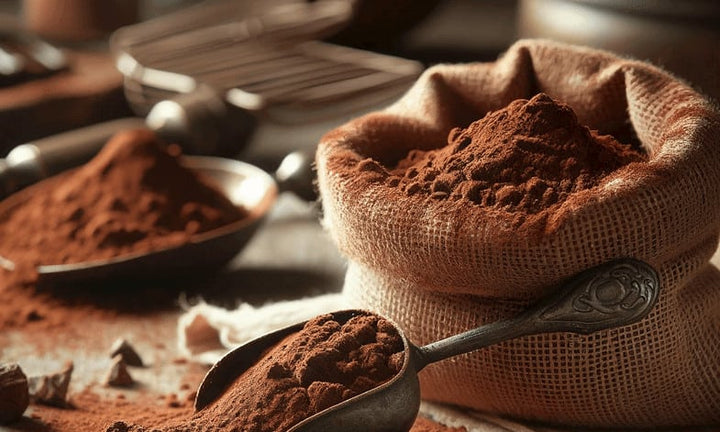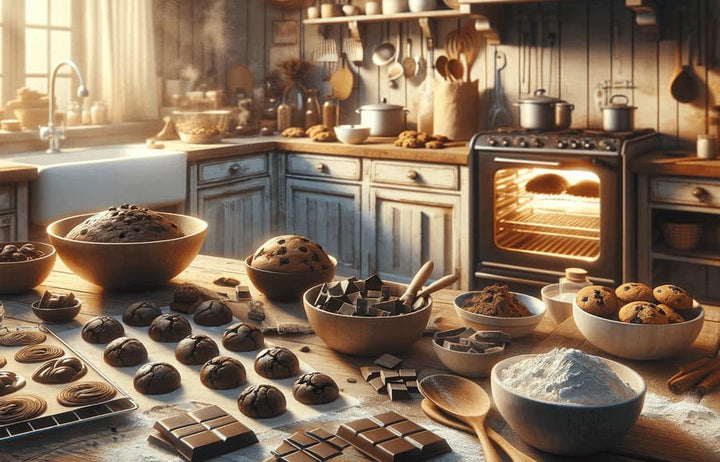It's a classic baking conundrum that you might have faced.
You've followed the recipe to the letter, carefully folding in those delicious chunks of chocolate, only to find that they've all sunk to the bottom.
The sinking of chocolate chips in your carefully crafted bakes can be a real frustration, especially when you're after a lovely, even distribution of chocolatey goodness throughout your cake, muffins or cookies.
Whether you’re a seasoned baker or just starting out, it’s a problem that can be confusing and a bit disheartening.
So, what causes this irritating phenomenon, and more importantly, how can it be prevented?
In this post, we’ll dive into the science behind the sinking of chocolate chips and offer some handy tips and tricks to help you achieve the perfect bake every time.
How to Stop Chocolate Chips Sinking
To keep chocolate chips from sinking in your baked goods, make sure to lightly coat them in flour for better grip and moisture absorption.
Opt for smaller chips and a thicker batter for better suspension.
Mix the chips well into the batter, but avoid overmixing to keep the right consistency.
Adding some chips on top before baking and ensuring the oven is preheated correctly will also contribute to a more evenly distributed result.
Let's look at all those steps in more detail:
-
Coat in Flour: Before adding the chocolate chips to your batter, toss them in a little bit of flour. Just a light dusting will do. This helps to absorb any excess moisture and gives the chips something to grip onto, helping them to stay suspended in the batter during baking.
-
Use Mini Chips: Smaller, lighter chocolate chips are less likely to sink during baking. Opt for mini chocolate chips instead of the larger, chunkier varieties if you can.
-
Batter Thickness: A thicker batter will help to hold the chocolate chips in place. If your batter is too runny, the chips will be more likely to sink. Make sure your batter is thick and not too liquidy.
-
Even Distribution: Make sure you mix the chocolate chips thoroughly and evenly throughout the batter. This will help to ensure an even distribution of chips throughout your bake.
-
Don't Overmix: Overmixing your batter can cause it to become too thin and runny, making it more likely for the chocolate chips to sink. Mix your batter just until all the ingredients are combined.
-
Add Chips on Top: After filling your muffin tins or cake tin with batter, sprinkle a few extra chocolate chips on top. Even if some of the chips do sink, you’ll still have some on top and throughout the bake.
-
Correct Oven Temperature: Ensure your oven is preheated to the correct temperature before putting your bakes in. A properly heated oven will help to set the batter quickly and prevent the chocolate chips from sinking.
Remember, a little trial and error may be necessary to get it just right, as different recipes may yield different results.
But with these tips in mind, you'll be well on your way to preventing those pesky chocolate chips from sinking and achieving a beautifully even distribution of chocolate throughout your bakes.
Why Do Chocolate Chips Sink?
Chocolate chips often sink to the bottom of a cake or muffins for a few reasons, all related to the physics of baking:
-
Density: Chocolate chips are denser than the batter they are mixed into. As a result, gravity pulls them down through the batter to the bottom of the tin as the bake cooks. This is particularly problematic in recipes with a very wet or thin batter, as there is nothing to 'hold' the chips up.
-
Batter Consistency: As mentioned above, the consistency of the batter plays a crucial role. A thin batter is less able to support the weight of the chocolate chips, making it easier for them to sink during baking. Conversely, a thicker batter will provide more support to the chips, helping to keep them suspended.
-
Size of the Chocolate Chips: Larger, chunkier chocolate chips are heavier and, therefore, more likely to sink during baking. Smaller chips or chocolate shavings are lighter and have a better chance of staying suspended in the batter.
-
Overmixing the Batter: Overmixing the batter can cause it to become too thin and runny, making it more likely for the chocolate chips to sink. Mixing the batter until all the ingredients are combined is important.
-
Uneven Distribution: If the chocolate chips are not evenly distributed throughout the batter, they can clump together, creating heavier areas that are more likely to sink during baking.
Understanding the reasons why chocolate chips sink can help you take steps to prevent it from happening in your bake.
It’s all about getting the balance right between the density of the chips, the consistency of the batter, and the size of the chips used.
What Type of Chocolate Are Chocolate Chips Made Of?
Chocolate chips are made from small pieces of chocolate that are specifically designed to hold their shape during baking rather than melting completely, like regular chocolate bars.
They are usually available in three main varieties:
-
Semi-Sweet Chocolate Chips: These are the most common chocolate chip types found in many recipes. They have a good balance of sweetness and cocoa flavour, typically containing around 50-60% cocoa solids.
-
Milk Chocolate Chips: These chips are sweeter and creamier than semi-sweet, as they contain milk solids and a higher sugar content, usually around 30-40% cocoa solids.
-
Dark Chocolate Chips: These chips have a higher cocoa content and less sugar, typically containing around 70-85% cocoa solids. They offer a more intense, bitter chocolate flavour compared to semi-sweet or milk chocolate chips.
-
White Chocolate Chips: These are made from a mixture of cocoa butter, sugar, and milk solids. Technically, white chocolate does not contain any cocoa solids, so it has a much sweeter and milder flavour than milk, semi-sweet, or dark chocolate chips.
In addition to these common varieties, you can also find speciality chocolate chips, such as bittersweet, mint-flavoured, or even chocolate chips with a caramel or peanut butter filling.
It's also possible to find sugar-free chocolate chips made with artificial sweeteners instead of sugar.
It’s important to choose the right type of chocolate chips for your recipe, as different types of chocolate chips will yield different flavours and textures in your final bake.
Where Can You Buy Delicious Melting Chocolate?
At Whitakers Chocolates, we have been passionately crafting chocolate for generations, and our commitment to quality is evident in every product we produce.
We use only the finest natural ingredients, ensuring all our chocolates are gluten-free and suitable for vegetarians, while our dark chocolate is also vegan-friendly, making our range suitable for everyone.
For chocolate melting, we offer a variety of products that are perfect for melting. Our Easymelt mini dark chocolate 55% shards are designed specifically for easy melting, making them the ideal choice for fondues.
Additionally, we have dual-flavoured chocolate bars available in both milk and dark chocolate.
These bars can be easily broken into pieces for melting, and the crunchy honeycomb pieces embedded within the chocolate add an extra layer of texture to your melted chocolate.
It's essential to start with high-quality chocolate and at Whitakers Chocolates, we've got you covered.
So, why not try our range of chocolate products for your next baking session and taste the difference that quality chocolate can make?
Some Notes From an Expert Chocolatier
Preventing chocolate chips from sinking in baked goods is a common challenge but here are some expert tips from a Whitakers Chocolatier:
-
Coat in Flour: Before adding the chocolate chips to your batter, toss them lightly in a bit of flour. This helps to absorb any excess moisture and gives the chips something to grip onto, helping them stay suspended in the batter during baking.
-
Use the Right Chocolate: Not all chocolate chips are created equal. Some are designed to hold their shape during baking, while others are made to melt easily. At Whitakers, our Easymelt range is specifically designed for melting, so you might want to use our regular chocolate chips for baking to ensure they stay suspended in the batter.
-
Batter Consistency: A thicker batter will provide more support to the chocolate chips and help keep them suspended. Make sure your batter is not too thin or runny.
-
Correctly Size Your Chocolate Chips: Larger, chunkier chocolate chips are heavier and more likely to sink. If you're having trouble with chips sinking, try chopping them into smaller pieces or using mini chocolate chips.
-
Proper Mixing: Make sure to evenly distribute the chocolate chips throughout the batter. If the chips clump together, they create a heavier mass that is more likely to sink.
Remember, the key to a successful bake is starting with high-quality ingredients, and at Whitakers Chocolates, we provide only the finest chocolate products.
Happy baking!
Final Notes On Chocolate Chips Sinking
The sinking of chocolate chips in baked goods is a common issue many bakers face, but with some knowledge and a few handy tips, it is entirely preventable.
Coating the chocolate chips in flour, using the right type and size of chocolate chips, maintaining the correct batter consistency, and ensuring proper mixing are all essential steps to prevent chocolate chips from sinking.
Remember, the key to any successful bake is starting with high-quality ingredients, and at Whitakers Chocolates, we provide only the finest chocolate products to ensure your baked goods turn out perfectly every time.











